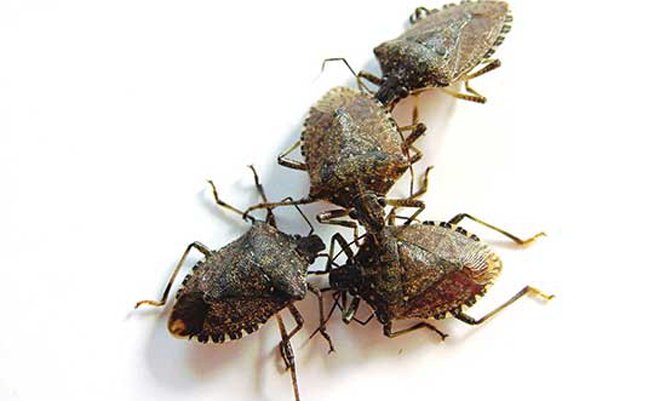
PHOTO: Mark Sheperdigian
In pest management, it’s not uncommon for challenging pests to come from unexpected places. Without natural predators, invasive species that aren’t controlled can spread and reach population numbers we don’t typically see in native species. Red imported fire ants, Argentine ants and German cockroaches are elite members of this group and have made huge economic impacts in areas they’ve invaded.

Dr. Eric Paysen, Technical Services Manager, Syngenta Professional Pest Management
Around 1998, a new stink bug was detected in Allentown, Penn., which was likely introduced through infested shipping crates and machinery from countries like Japan and China. Twenty years later, brown marmorated stink bugs (BMSBs) are found in 44 U.S. states and have become important pests in agriculture and structural pest management.
Like other members of the Pentatomidae family, BMSBs are plant feeders and use their sucking mouthparts to penetrate leaves, fruit and stems to extract food through suction. As generalists, they feed on a wide variety of fruit trees, native plants, ornamentals and crops. They feature the typical shield shape of common stink bugs, are brown and marmorated (or marbled), and can be identified by broad, whitish bands on the two outer antennal segments, which are present in both adults and nymphs.
BMSBs overwinter as adults. This isn’t an uncommon trait for stink bugs, although they are much more likely than other stink bugs to enter man-made structures in search of shelter. In the fall, they become social and pile together in large numbers. Infestations can reach epic proportions, with some homes acquiring tens of thousands of these unwanted guests. BMSBs gain entry through doors, windows, unscreened attics, foundation vents, gaps around electrical fixtures, and spaces between boards around eaves and fascia. Once in a suitable location, they enter hibernation and are dormant until spring.
It’s not uncommon for warm temperatures inside climate-controlled dwellings to cause BMSB activity in mid-winter, when they’re seen clumsily flying around and bouncing off walls and windows. When this occurs, it’s best to remove them with sticky glue board-equipped light traps. Avoid electrocution or vacuuming live bugs, as this can trigger the release of powerfully odorous chemicals. ULV fogging can also help knock down large populations, which can then be vacuumed posthumously without odor.
Exclusion is key for prevention, but may not be practical because of the number of openings on a typical structure. BMSBs are attracted to lights at night, so in areas prone to infestation, changing bulbs to mercury vapor or yellow is a good practice. Additionally, an application of a long-lasting residual product with fast knockdown around openings can help repel or kill bugs before they gain access. Microencapsulated or wettable powder formulations of pyrethroid chemistries are most effective. It is important to be familiar with the timing and climate of your area to time applications immediately before hibernation behaviors begin.
The post Brown marmorated stink bugs: a smelly situation appeared first on Pest Management Professional.
from Pest Management Professional https://www.mypmp.net/2018/11/14/brown-marmorated-stink-bugs-a-smelly-situation/
Sacramento CA
No comments:
Post a Comment